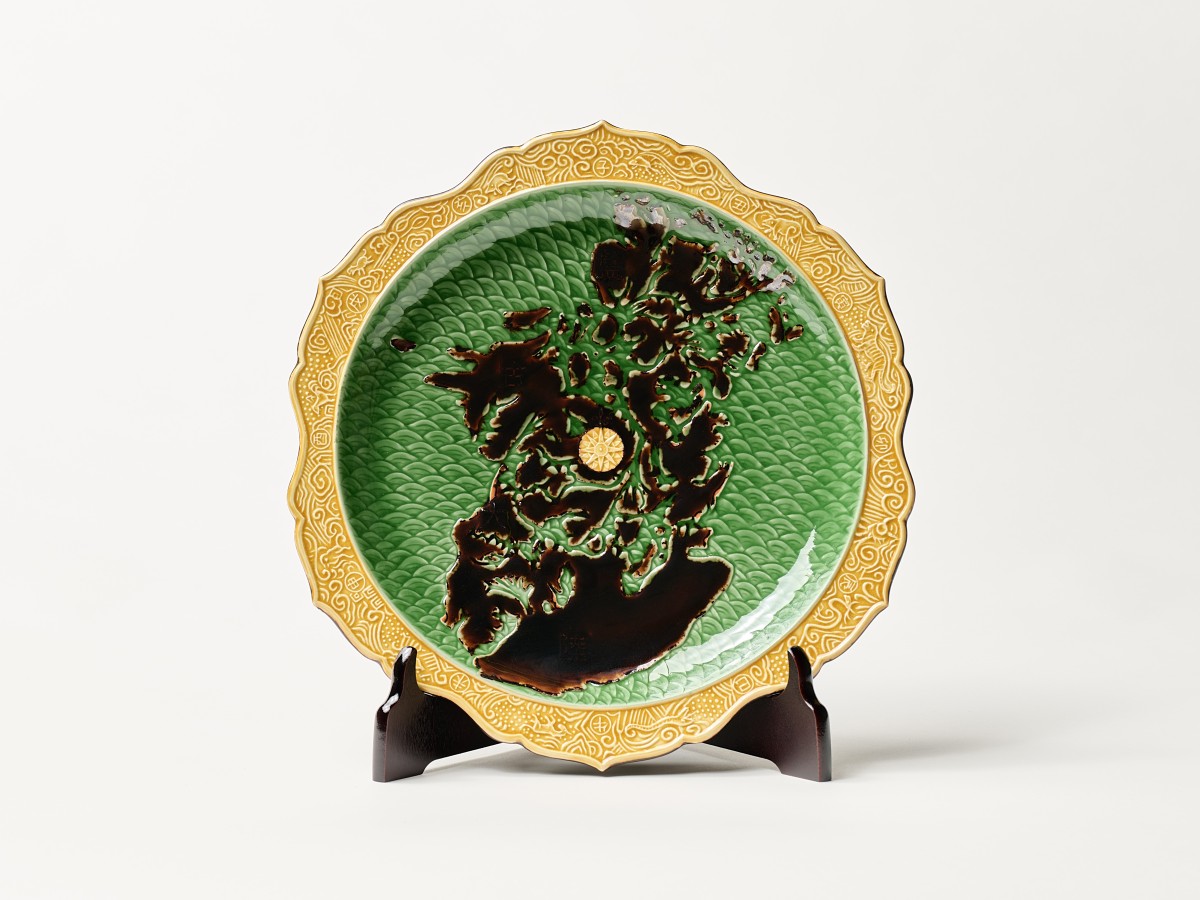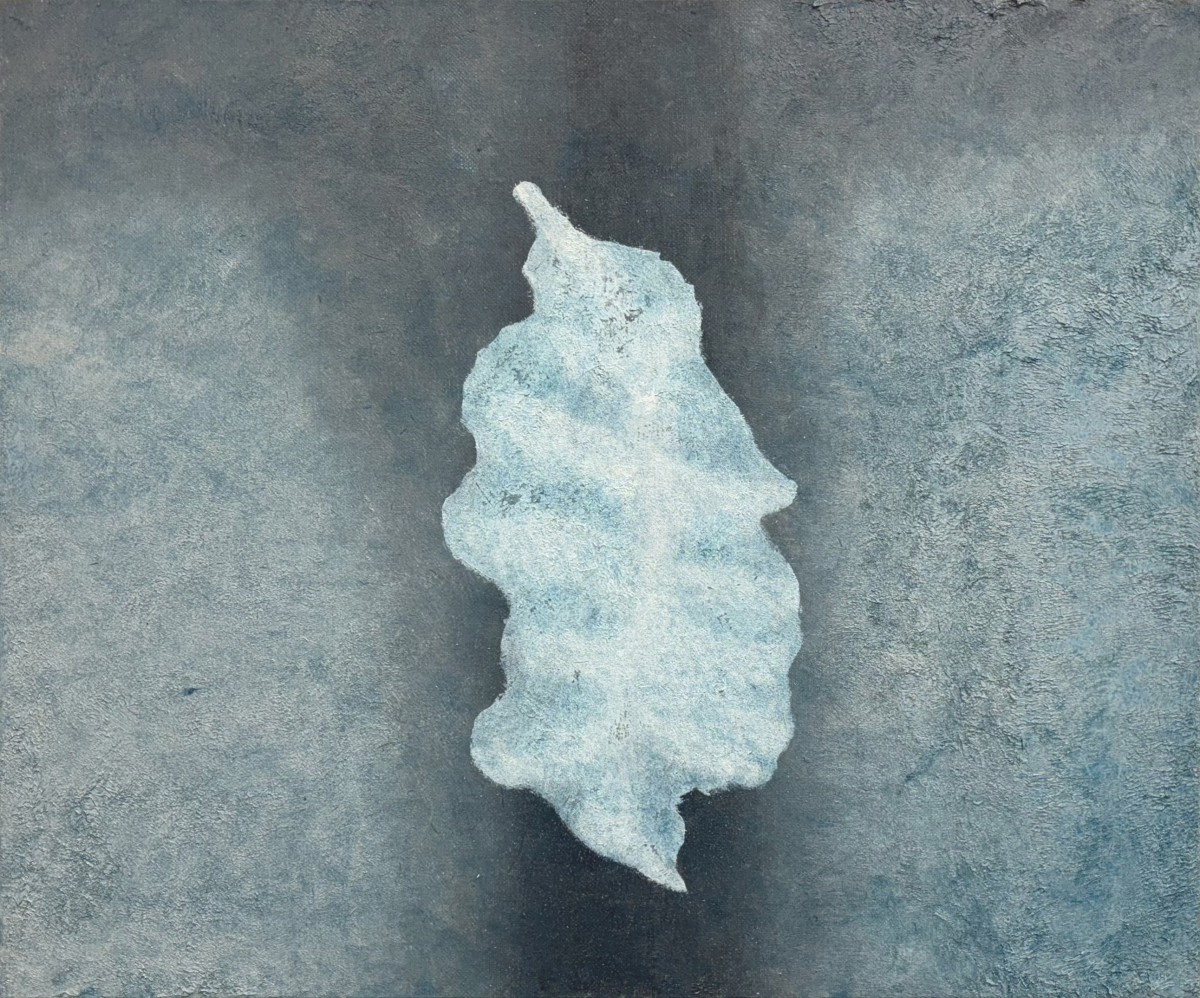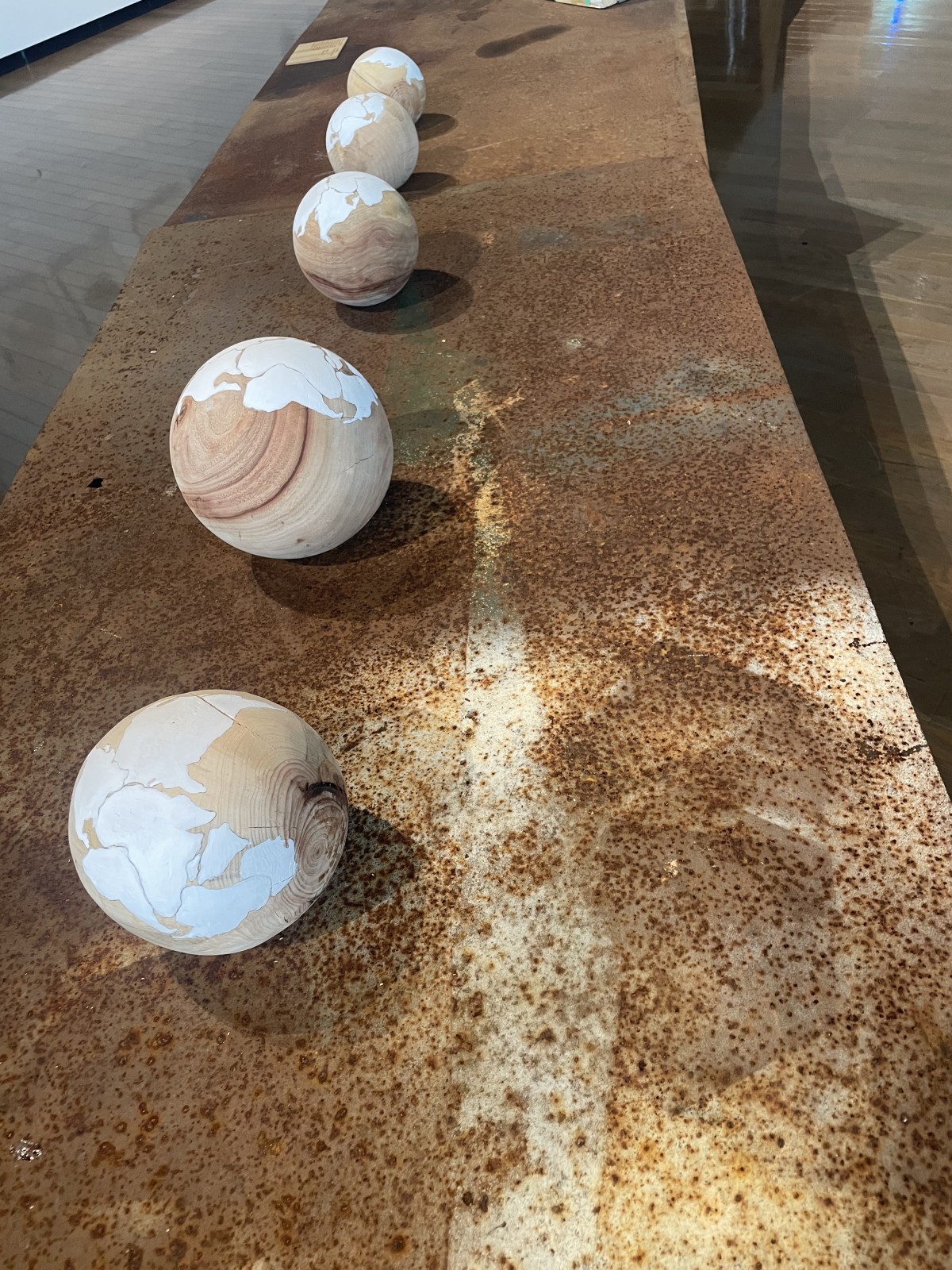
Ozawa Tsuyoshi, I turned a Gennai-ware world map into a single continent, 2025, Clay, Glaze, 34 × 34 × 2 cm
Ozawa Tsuyoshi
Pangaea
November 4 – December 6, 2025
Opening Reception: Saturday, November 8, 17:00-19:00
Tuesday-Saturday 12:00-19:00 (Closed on Mon, Sun, Public holidays)
Press Release
Download Press release (日本語)
Download Press release (English)
MISA SHIN GALLERY is pleased to present Ozawa Tsuyoshi’s solo exhibition Pangaea, on view from November 4 through December 6, 2025. The exhibition takes the concept of “Pangaea”— the primordial supercontinent in which all the world’s landmasses were once connected— as a point of departure to envision an image of “a world as one” in our present age, where divisions deepen across various aspects of society.
In 2024, Ozawa conducted a workshop in Beppu, Oita Prefecture, inviting eight citizens from diverse backgrounds to draw world maps purely from memory. He then cut and reassembled each map like puzzle pieces, merging them into a single continent. Onto these reconfigured maps, the artist layered impressions from his conversations with the participants as well as their favorite colors, creating eight distinct visions of Pangaea.
In addition to this painting series, the exhibition features several new works, including I turned a Gennai-ware world map into a single continent (2025), a reconstruction inspired by an Edo-period world-map plate from The Kagawa Museum’s collection of Gennai ware (a type of tricolor ceramic produced under the guidance of Hiraga Gennai). Other highlights include Pangaea Globe, in which Ozawa paints the supercontinent on a wooden sphere made from felled trees, and new paintings depicting his own version of Pangaea.
“Whether we feel it or not,” Ozawa reflects, “the ground we live on is always moving slowly. In hundreds of millions of years, the six continents will collide, connect, and eventually become one again. When I think about the Earth on that kind of scale, the fragmented and dysfunctional world we live in today starts to feel so small and insignificant. It might be a bit forced, but I wondered if it was possible to visualize the idea of the world being one.”
Art may not have the power to change the world in an instant, yet Ozawa believes in the quiet force of art, its ability to gradually and deeply permeate people’s hearts and minds, and he continues to listen closely to that potential. Without fueling division in the name of righteousness or surrendering to despair, his works manifest a modest, human-sized wish—an image of unity embodied in the form of the ancient supercontinent, Pangaea.
An opening reception with the artist will be held on Saturday, November 8.
We warmly welcome your visit.

Ozawa Tsuyoshi, Pangaea Beppu R.B.K, 2024, Oil on canvas, 45.5 x 38 cm

Installation view: Pangaea Globe at Toride Annex, The University Art Museum, Tokyo University of the Arts, 2025
Ozawa Tsuyoshi
Born in Tokyo in 1965. Earned master’s degree from the Department of Fine Arts of the Graduate School of Tokyo National University of Fine Arts and Music (majoring in mural painting) in 1991. Ozawa’s notable works include: his “Jizoing” series, in which he photographs statues of homemade Jizo statues situated in different environments; his Nasubi Gallery series of portable micro-galleries made from milk boxes; his “Museum of Soy Sauce Art,” in which he reproduces historical Japanese art masterpieces using soy sauce; and his “Vegetable Weapon” series of photographic portraits of young women holding “weapons” made of vegetables. Selected major solo exhibitions include: “Answer with Yes and No!” at the Mori Art Museum (Tokyo, 2004), “The Invisible Runner Strides On” at the Hiroshima City Museum of Contemporary Art (Hiroshima, 2009), “Tsuyoshi Ozawa : Everyone likes someone, as you like someone” at the Fukushima Prefectural Museum of Art and the Toyota Municipal Museum of Art (Fukushima, Aichi, 2012), “Tsuyoshi Ozawa Imperfection: Parallel Art History” at the Chiba City Museum of Art (Chiba, 2018).” The Seven Wonders Of Sanuki “The Kagawa Museum (Kagawa,2025). Selected major group exhibitions include: “Saitama Triennale: Envisioning the Future!” (Saitama 2016) and “Yokohama Triennale : Island, Consetellations & Galapagos“ (Kanagawa 2017), “13th Berlin Biennale for Contemporary Art” (Berlin 2025) and the recently partially modified “Slug Buddha 88” is on permanent display in the Valley Gallery, which opened at Benesse Art Site Naoshima in March 2022. Ozawa’s artistic collaboration “The Xijing Men”, explores themes related to breaking communication barriers, with Chinese artist Chen Shaoxiong and Korean artist Gimhongsok, “Xijing Is Not Xijing, Therefore Xijing Is Xijing.” at 21st Century Museum of Contemporary Art, Kanazawa. (2016), “Art and China after 1989: Theater of the World” at Solomon R. Guggenheim Museum and Guggenheim Museum Bilbao (New York, Bilbao 2018). Ozawa is participating in the ongoing exhibition The Prism of the Times: Artistic Expressions Born in Japan, 1989–2010 at The National Art Center, Tokyo, under both Ozawa Tsuyoshi and The Xijing Men.
